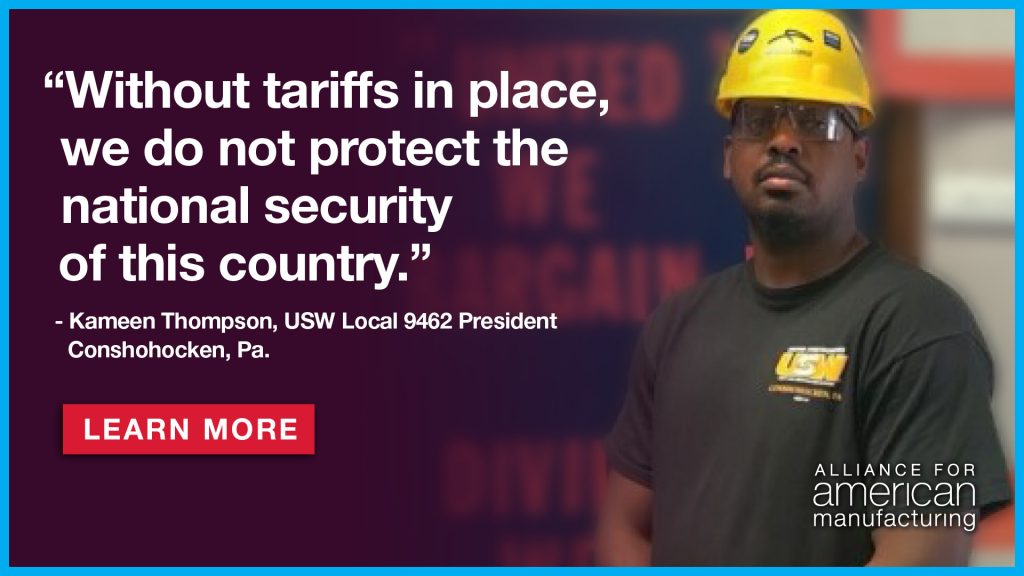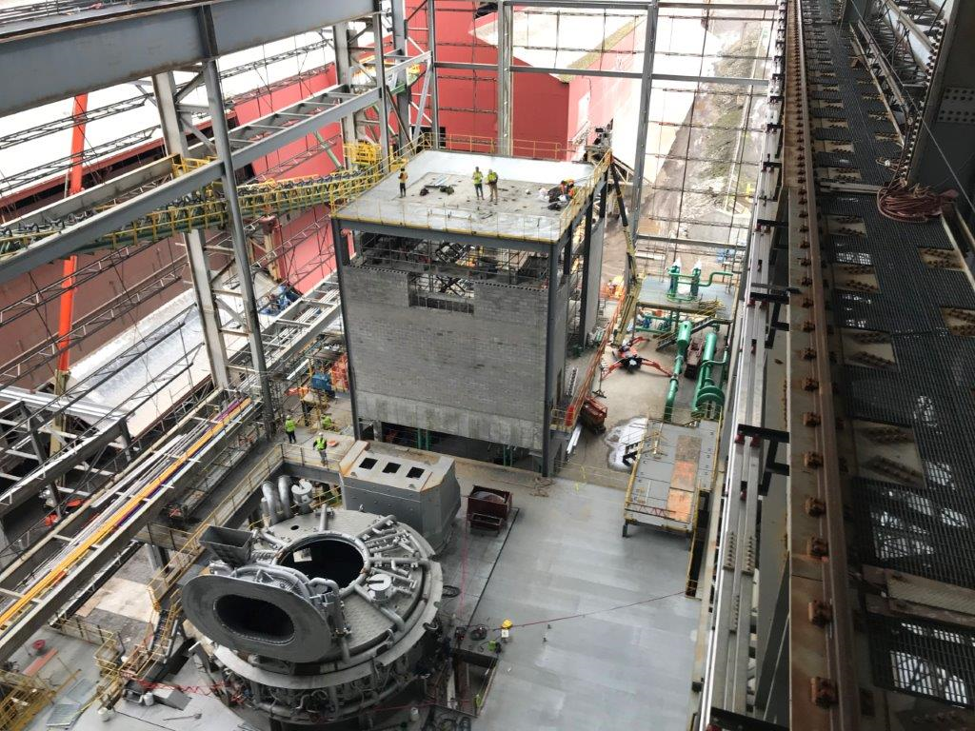
Steelworker Seth Skalnik watched as the blast furnace came down at the U.S. Steel facility. Five years later, he was there when the steel mill mounted a comeback.
When the last piece of steel was cast at the No. 8 blast furnace of U.S. Steel’s Fairfield Works on August 15, 2015, to most Alabamans it signaled the death knell for steelmaking in Birmingham’s Jones Valley.
The mill had been hit hard by a global steel crisis fueled by massive overcapacity. Foreign countries like China, Russia, India, South Korea, and even some in the European Union used unfair trade practices like state-owned enterprises, massive government subsidies, and lax environmental and labor standards to make cheap, low-quality steel, which flooded the U.S. market and undercut American steelmakers and workers.
As a result, dozens of American steel mills were closed or idled, while tens of thousands of steelworkers lost their jobs. Fairfield Works was among them, an especially tough blow considering U.S. Steel previously had big plans for the facility.
U.S. Steel was preparing to replace its blast furnace operation at Fairfield with a new, cost-effective, environmentally friendly Electric Arc Furnace (EAF). But when the blast furnace was shut down in 2015, U.S. Steel halted the project. The pieces of equipment that comprised the EAF sat uninstalled.
Then in 2018, Section 232 steel tariffs were put into place. That trade action was just the medicine needed to bring Fairfield Works back to life. U.S. Steel resurrected the the EAF project, and the furnace became operational in 2020.
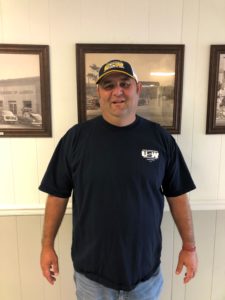
“The 232 was no doubt essential for our survivability and for us to get our EAF up and built. It no doubt turned things around,” said Seth Skalnik, who has worked at Fairfield Works since 2000. “We even had meetings in the mills, and both the union and the company were telling us to write our congressmen and get behind the 232 tariffs.
“Every bit of the 232 tariffs have been great for the steel industry overall, not just in Alabama but throughout the United States. It has no doubt slowed down the steel dumping from China.”
There were approximately 2,000 United Steelworkers (USW) members working at the mill when Skalnik was hired. But by 2016, 1,200 workers had been laid-off, and those that remained worked in the adjoining U.S. Steel Tubular Mill. With the decrease in natural gas fracking, the demand for seamless tube diminished and the workforce in the tubular mill continued to decline.
But after the EAF got up-and-running in 2020, 150 steelworker jobs were quickly created. Today, there are approximately 850 USW members on the job at the Fairfield Works.
“When they put those 232s on we were happy, elated, ecstatic here,” said Skalnik, who at the age of 44 is a progressive force in his USW local. “We knew that the EAF was going to happen after the 232s were put into place. We got a call in January of 2019 about an agreement to build it and the rest is history.”
It seems the death of Fairfield Works was greatly exaggerated.
“They’ve made some huge investments in the U.S. as far as the hot strip stuff,” Skalnik said. “They made improvements here in my home mill and I am forever grateful for it. It puts sustainability here at Fairfield for a while.”
***
Skalnik was laid-off from March 2016 through May 2017, but he was one of the fortunate ones, as he was able to return to work by moving his skills to the pipe mill.
For the first 16 years of his USW career, Skalnik was a production worker at the caster, where he casted steel into molds. He also worked at the powerhouse and at the Q BOP furnace.
He became part of USW Local 1013 elected officer operations in January 2019, and today he is the Joint Efforts Coordinator, working daily in the union office helping USW members with pensions, disability and health insurance.
Skalnik is a second-generation steelworker who lives in Empire, Ala,. which is 25 miles west of Birmingham. He is a married father of a 14-year-old son and a 9-year-old daughter, and the family lives a comfortable, rural life on four acres of land.
“Working here at U.S. Steel is one of the top-paying jobs in our geographical location,” he said. “The benefits here really make it a great package. We have great benefits and that is a plus you can kick onto your hourly rate. And with the American steel industry doing so well, we are getting generous quarterly profit sharing.
“The area I live in rural Alabama used to have a lot of textile mills, and I’ve seen them come and go over the years. You would ride through a community like Jasper, which I am not too far from, and they had a huge shirt factory. Pell City was a big textile town. Hamilton and Winfield were huge textile towns. Those factories are all gone. They all moved overseas. The steel industry is going to repeat what happened in the textile industry if we don’t put rules like the 232s in place to take care of that.
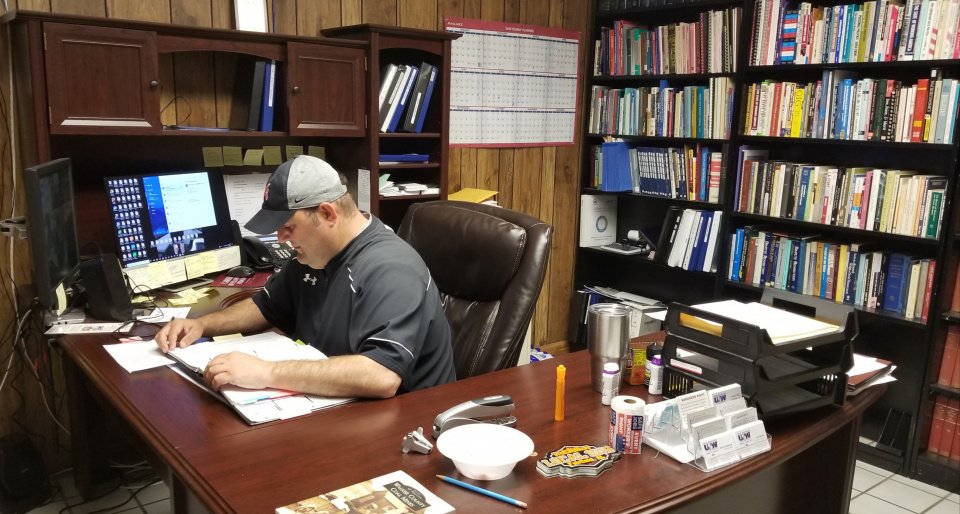
“I know times are changing. We are getting away from the blast furnaces and going with mini-mill technology. [U.S. Steel] just announced a $3 billion mill is going to land somewhere and we are trying to change with the times but if we have illegal dumping, there is no way we can compete.”
After investing in the $412 million EAF at Fairfield Works, it is possible that the U.S. Steel mill, once thought to be obsolete, could be on the receiving end of that $3 billion mini-mill investment. It was recently announced that Fairfield is near the top of the short list to be the site of future mill that will produce products quicker, more safely and in a sustainable manner.
The mini-mill investment is part of U.S. Steel’s strategy to reduce global greenhouse gas emissions and to meet a goal of net-zero carbon emissions by 2050.
“If you didn’t have these 232s, probably the only thing running in the whole corporation would be Gary Works,” Skalnik said. “They are seeing that these blast furnaces are just too much to maintain and not cost effective with the open markets we have now, the green technology and the EAFs.
“We are in our first transition phase. Buying the Big River Steel Mill in Arkansas was the second transition and hopefully the third will come with this new EAF project.
“When I hired in it was gangbusters around here. We had slabs we made pretty much for appliance housings. That was our main focus here and then we made tubular products.”
One area that Fairfield Works missed out on was supplying steel for automotive manufacturing. In 1995, Mercedes Benz built an American assembly plant 40 miles south of the Birmingham area and today there are at least a half dozen foreign brand auto plants within a 300-mile radius of Birmingham.
“The thing that hurt Fairfield is we only had a 68-inch-wide slab facility,” Skalnik said. “We didn’t have that 100-inch-wide capability here to roll slabs for automotive purposes. We were pretty much refrigerators, housings, toolbox housings and stuff like that.
“We were trapped as far as supplying the automotive manufacturing here, where Gary Works and Great Lakes Works and all those could supply for automotive. There is a need here in the south for all those automotive manufacturers that have popped up.”
These foreign brand automotive companies have located their massive manufacturing plants in Alabama and other parts of the south because they can hire non-union labor and pay their workers less.
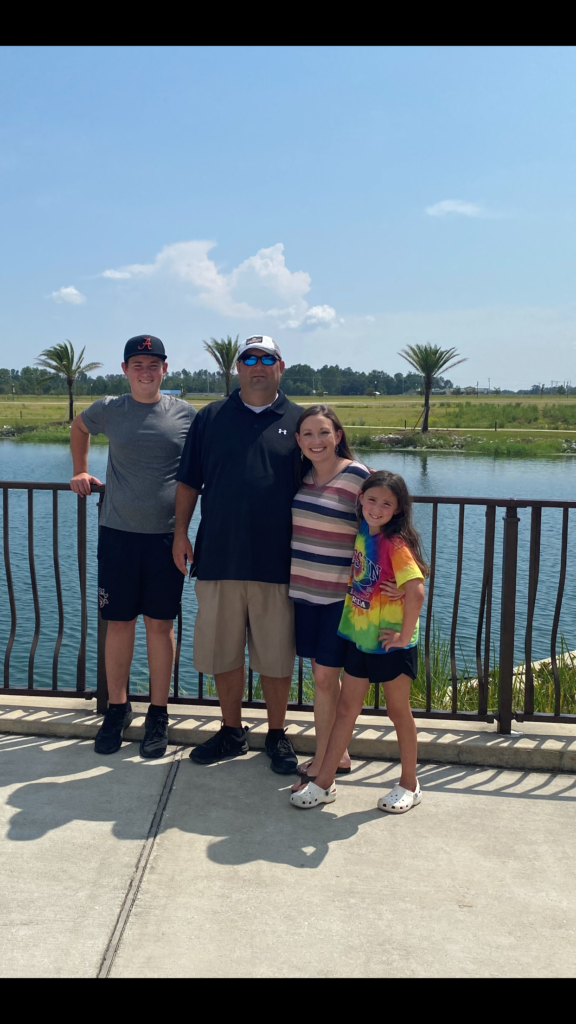
But Skalnik is a staunch supporter of the USW and the benefits of quality, union labor. Members of his USW Local 1013 were recently involved in the struggle to help nearby Amazon workers unionize. He routinely attends union events of a variety of industries and is always willing to help organize so employees can have the benefit of collective bargaining.
But with the erratic history of the American steel industry, he sees the importance of trade action that levels the playing field for American workers.
“I feel like the 232 tariffs have done a good job on a good part of this problem, but I would like to see it even stronger just to solidify everything being home here and everything being made at home here in America,” he said. “I don’t know the breakdown of it all but there are some goods that are taxed at some rates and some slide until they hit a cap. I would like to see the caps strengthened that way we would get the Made in America manufacturing back here.
“You know, working as a steelworker, I wouldn’t trade my experience here for anything else. It has put food on my table for 21 years, allowed me to live a good life, and if they did do another shutdown, I would have a guaranteed pension and be very well off if it shut down.
“Without the 232s, there is no doubt I could be out of a job. I have been before in 2016. I sat at the pipe mill in 2017 and through the tree line watched the top of the No. 8 blast furnace hit the ground. I watched it implode 300 feet from the powerhouse where I worked at.
“There is no doubt it is a stark reminder every year on Facebook when I see the memory of that blast furnace imploding. If it wasn’t for the 232s, there is no telling what I would be doing today.”
